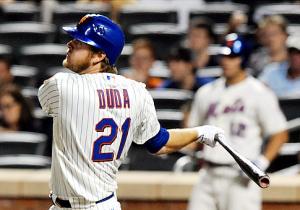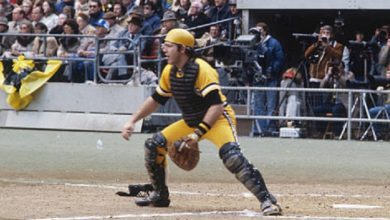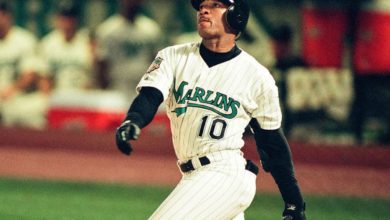

Thus far, the New York Mets have made promising moves in an action-packed Major League Baseball offseason. They’ve solidified both the outfield and the offense, acquiring a proven quantity in Curtis Granderson and a reclamation project in Chris Young. They’ve led the National League East in winter upgrades, so far, and they look like they have a chance to prove doubters wrong in 2014. There is still work be done, of course, and part of that work involves sorting out the first base situation. Lucas Duda should still be considered as a viable option and given a chance to explore his upside as a middle-order hitter.
One thing even Lucas Duda’s detractors have to admit: He clearly performs better at the plate when he’s at first base. This is why moving him to his natural position solved two problems at once: It closed a gaping hole in the Mets’ outfield defense, and it allowed Duda to relax and stop stressing about being a gaping hole in the Mets’ outfield defense.
When Lucas Duda hits the ball, he clobbers it. If nothing else, he’s proven that he’s got tremendous raw power and can hit the ball out of any park in baseball. Being a lefty, this is of particular importance to the Mets, even after the acquisition of Granderson. If Lucas Duda emerges as the kind of lefty power threat he can be, the effect will ripple up and down the lineup. Duda’s lineup protection can make proven hitters like Granderson and David Wright even more dangerous, and will also remove pressure from the bottom of the order. But Lucas Duda’s importance isn’t just about his power; after all, the enigmatic, temperamental Ike Davis had as much power as anyone, and he might be the most frustrating Mets hitter since Luis Castillo. What separates Lucas Duda from Ike Davis is that he’s a threat to do more than hit it 400 feet.
Unlike Davis, who seems increasingly to be a limited-outcome hitter, Duda has shown he can hit situationally. He can cut down his swing and serve it up the middle with a runner in scoring position. He doesn’t always seem to swing out of his shoes. He has a good eye for the strikezone, and his approach is more likely to lead to productive outs to advance runners than Davis. All of this means he’ll be able to drive in runs without hitting the ball over the fence, which is generally more than Ike Davis seems to offer. Moreover, his swing has fewer holes in it than Ike’s, meaning opposing pitchers will have to work harder to get him out.
If Duda settles in at first base, it would allow the Mets to use the solid-hitting but defensively ill-defined Daniel Murphy as trade bait. Murphy could flourish in a hitter’s park, and he’s probably destined to be a designated hitter and rotating utility infielder. Dealing Murphy and Davis would allow the Mets to move Eric Young, Jr. to second base, upgrading the defensive infield and keeping his speed and hustle in the lineup. They could also audition Wilmer Flores at second base. Murphy and Davis could be used to solidify the starting rotation with a veteran like Brett Anderson, or perhaps acquire an upgrade at shortstop.
Any way you look at it, Lucas Duda is an option worth exploring in the 2014 season. He can solidify the lineup with lefty power and situational hitting, and allow the Mets to address other necessities.





